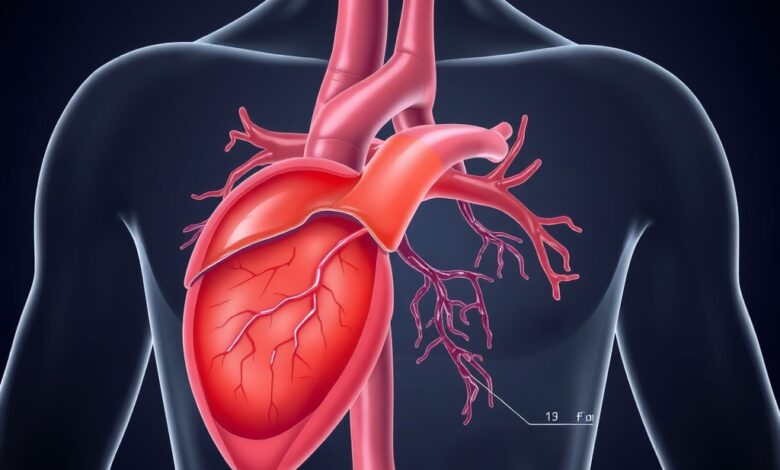MyHHT: Understanding, Managing, and Thriving with Hereditary Hemorrhagic Telangiectasia

Hereditary Hemorrhagic Telangiectasia (HHT), also known as Osler-Weber-Rendu syndrome, is a rare but important genetic condition that affects blood vessels. Many people living with this condition search for information under the term MyHHT, as it has become a central point for awareness, education, and patient support.
Although rare, HHT can significantly impact quality of life if not diagnosed and treated properly. This article aims to provide a comprehensive look at MyHHT, from understanding the basics of the disease to exploring treatment options, lifestyle adjustments, and long-term management.
What is MyHHT?
MyHHT is often used to describe both the medical condition (Hereditary Hemorrhagic Telangiectasia) and the patient-focused resources available online. At its core, HHT is a genetic disorder that affects blood vessel formation, leading to fragile and abnormal connections between arteries and veins.
These abnormal blood vessels, called telangiectasias and arteriovenous malformations (AVMs), can form in the nose, skin, lungs, brain, liver, and other organs. Because these vessels are fragile, they often break and bleed, which explains one of the hallmark symptoms of HHT: frequent nosebleeds.
Causes and Genetic Basis of MyHHT
HHT is inherited in an autosomal dominant manner, which means that a person only needs to inherit the faulty gene from one parent to develop the condition. If one parent has HHT, each child has a 50% chance of inheriting it.
The most common genetic mutations responsible for HHT are found in the following genes:
- ENG (endoglin gene) – linked to HHT type 1
- ACVRL1 (activin receptor-like kinase 1 gene) – linked to HHT type 2
- SMAD4 gene mutations – associated with a rare overlap between HHT and juvenile polyposis
Because of its genetic nature, family history plays a critical role in early diagnosis.
Common Symptoms of MyHHT
HHT can present differently depending on the person and the organs involved. The most common symptoms include:
- Frequent Nosebleeds (Epistaxis)
- Often the first and most visible symptom.
- Can range from mild to severe, leading to chronic anemia.
- Telangiectasias on the Skin and Mucous Membranes
- Tiny red or purple spots caused by abnormal blood vessels.
- Usually appear on the lips, face, tongue, and hands.
- Arteriovenous Malformations (AVMs)
- Abnormal connections between arteries and veins.
- Can occur in the lungs, liver, brain, and gastrointestinal tract.
- May cause serious complications if untreated.
- Anemia and Fatigue
- Chronic bleeding can lead to low iron levels.
- Results in tiredness, weakness, and shortness of breath.
- Digestive Tract Bleeding
- Internal bleeding may cause black stools or blood in stool.
Diagnosis of MyHHT
Diagnosing HHT can be challenging because its symptoms overlap with other conditions. However, doctors use the Curaçao Criteria, which include four major signs:
- Spontaneous and recurrent nosebleeds
- Multiple telangiectasias on the skin or mucous membranes
- Internal organ AVMs (lungs, liver, brain, gastrointestinal tract)
- Family history of HHT
A diagnosis is considered:
- Definite HHT if three or more criteria are present.
- Possible HHT if two criteria are present.
- Unlikely HHT if fewer than two criteria are present.
In addition to clinical evaluation, genetic testing can confirm the diagnosis and help identify at-risk family members.
Treatment Options for MyHHT
Currently, there is no complete cure for HHT, but several treatments are available to manage symptoms and reduce complications:
1. Nosebleed Management
- Humidifiers and nasal ointments to keep nasal passages moist.
- Laser therapy or cauterization to seal fragile vessels.
- Antiangiogenic drugs (such as bevacizumab) in some cases.
2. Treating Anemia
- Iron supplements (oral or intravenous).
- Blood transfusions in severe cases.
3. AVM Treatment
- Embolization: A minimally invasive procedure to block abnormal vessels.
- Surgery: Removal of dangerous AVMs in the brain or lungs.
- Radiation therapy in certain cases.
4. Medications
- Anti-bleeding drugs (tranexamic acid).
- Targeted therapy for vascular growth control.
Living with MyHHT: Lifestyle and Self-Care
Managing MyHHT involves more than just medical treatments—it also requires lifestyle adjustments to reduce risks and improve well-being.
Practical Self-Care Tips:
- Stay hydrated to keep mucous membranes moist.
- Avoid nasal irritants such as smoke, strong perfumes, and dry air.
- Use saline sprays regularly.
- Monitor iron levels through regular blood tests.
- Practice safe exercise—avoid high-risk sports if you have AVMs.
- Seek genetic counseling if planning a family.
Mental and Emotional Health
Living with a chronic condition like HHT can be emotionally challenging. Many patients benefit from joining support groups (like the MyHHT community) to connect with others who understand their journey.
The Role of MyHHT Online Platforms
Beyond the medical definition, MyHHT also refers to online resources and communities dedicated to HHT awareness. These platforms:
- Provide educational content for patients and families.
- Share the latest research and treatment updates.
- Connect patients with medical specialists.
- Offer support forums and patient stories.
For individuals newly diagnosed, MyHHT platforms can serve as a lifeline of information and encouragement.
Research and Future Outlook for MyHHT
Scientists continue to study HHT to better understand its genetic and molecular basis. Promising areas of research include:
- Anti-angiogenesis drugs that target abnormal blood vessel formation.
- Gene therapy approaches that may correct faulty DNA sequences.
- Biomarkers to detect HHT earlier and monitor progression.
As awareness grows, more clinical trials and specialized treatment centers are being established worldwide, giving patients hope for improved care.
MyHHT and Family Planning
Because HHT is hereditary, it raises questions about family planning. Options such as genetic counseling, prenatal testing, and IVF with genetic screening are available to help families make informed decisions.
This aspect of MyHHT emphasizes not only the medical impact but also the personal and emotional challenges associated with the condition.
Conclusion
MyHHT, or Hereditary Hemorrhagic Telangiectasia, is a complex genetic condition that requires lifelong management. While it can present serious health challenges—from frequent nosebleeds to life-threatening AVMs—advancements in treatment and greater awareness have given patients new hope.
With proper diagnosis, medical care, lifestyle adjustments, and community support, individuals with MyHHT can live fulfilling and healthy lives. The combination of medical innovation and patient advocacy ensures that the future for those with HHT continues to improve.



